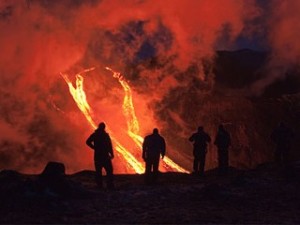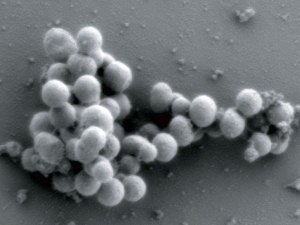*** Check out the risks these amateurs take as they take vacations just to photograph erupting volcanoes all over the world.
From Denny: Do you ever wonder how those awe-inspiring photos get to us from the media? There are those crazy and downright obsessed volcano photographers out there in the science world. When word gets out that a volcano is erupting in the world, these guys jump on the first plane out to run to the volcano. Most people have more sense and run away from said erupting dangerous volcano. 🙂
Check out the personal story of one German photographer, Martin Rietze. To give you an idea of the ground conditions of what it’s like for a photographer, Rietze’s experience tells it all. He didn’t sleep for three nights straight. (Smart move in my book.) Turns out the volcano was throwing out huge chunks of rock the size of cars like some screaming diva in a world class hissy fit. That would prompt anyone to stay awake and on alert.
He hugged a nearby boulder as a shield against the lava-spewing volcano. Yeah, that’s right. Why? Because that protective boulder was only 1,600 feet from the mouth of Iceland’s Eyjafjallajökull volcano. Crazy or brave, you decide.
Rietze is an engineer by day who builds delicate electronics for planetariums. He is also a volcanophile, one of a small group worldwide who like to spend their vacations traveling to erupting volcanoes. Molten magma, choking ash clouds, poisonous gases, smoking-hot boulders raining down upon them are all part of the thrill for this mostly male band of thrill seekers. The estimate is they number at about 200 and hail from Germany, Japan, the Netherlands, Belgium, the USA, France and Switzerland. The majority of them are professional engineers: computer, electrical, chemical and mechanical.
This crazy pursuit is one of those adventures they know they can’t make a living doing so it is a labor of love. Once this adventure was a solitary pursuit but with the advent of the web this small band of volcanophiles are able to share their adventures and tips.
Just when you think this pursuit is such a great idea, the professionals urge caution like from those who shoot for National Geographic: “”They put fire in people’s eyes and their brain is left behind,” say Donna and Steve O’Meara, a husband-and-wife team. They caution that because volcanoes are so incredibly alluring that inexperienced people tend to take far too many chances that are risky and not wise.
They remind us experienced volcanologists, Katia and Maurice Krafft from France and Harry Glicken from the USA, perished in an eruption on Mount Unzen in Japan on June 3, 1991. With them were 41 journalists who also risked their lives and died with the scientists.
Some in the academic community disdain the amateurs because of their risk taking. There are other academics who welcome them as a good resource. Richard Wunderman, editor of the Bulletin of the Global Volcanism Network for the Smithsonian Institution in Washington, D.C. says he counts on amateurs for reports and photos of eruptions that would otherwise go unrecorded. “They’re an amazing resource.”
One reason it is so dangerous to photograph a volcano is because of the amount of time required to get a clear shot. Clouds, fog and steam often obscure the view and what makes for a stunning photo. The more time you spend in the dangerous chaotic environment the greater the risk.
For safety gear in this vicious environment, Patrick Koster, a chemical engineer of Spijkenisse, the Netherlands, dons a climbing helmet, gloves, goggles and a gas mask to filter ash as well as neutralize chemicals in the gases emitted by the volcanoes. Koster says this gear is “very important because fresh lava can be razor-sharp. If you put your hand down on something, you can get cut badly.”
Cinematographer Sean Stiegemeier, of Los Angeles, remarked about how much easier it was to photograph the Iceland volcano Eyjafjallajökull since it was so accessible compared to most volcanoes that erupt in remote places in the world. “The one good day of weather we were there, there were probably 10 cars out next to the volcano, most of them photographers with gigantic lenses,” he reported. “It was so loud, every now and again it felt like it was rumbling its stomach at us and then it would spit out lava.”
Yeah, these crazy amateurs are definitely dedicated. 🙂 Good hunting, guys. I’ll definitely keep you in my prayers.
![]()
*** Photo by Helen Maria Bjornsd/Nordic Photos/Getty Images
*** THANKS for visiting, feel welcome to drop a comment or opinion, enjoy bookmarking this post on your favorite social site, a big shout out to awesome current subscribers – and if you are new to this blog, please subscribe in a reader or by email updates!






